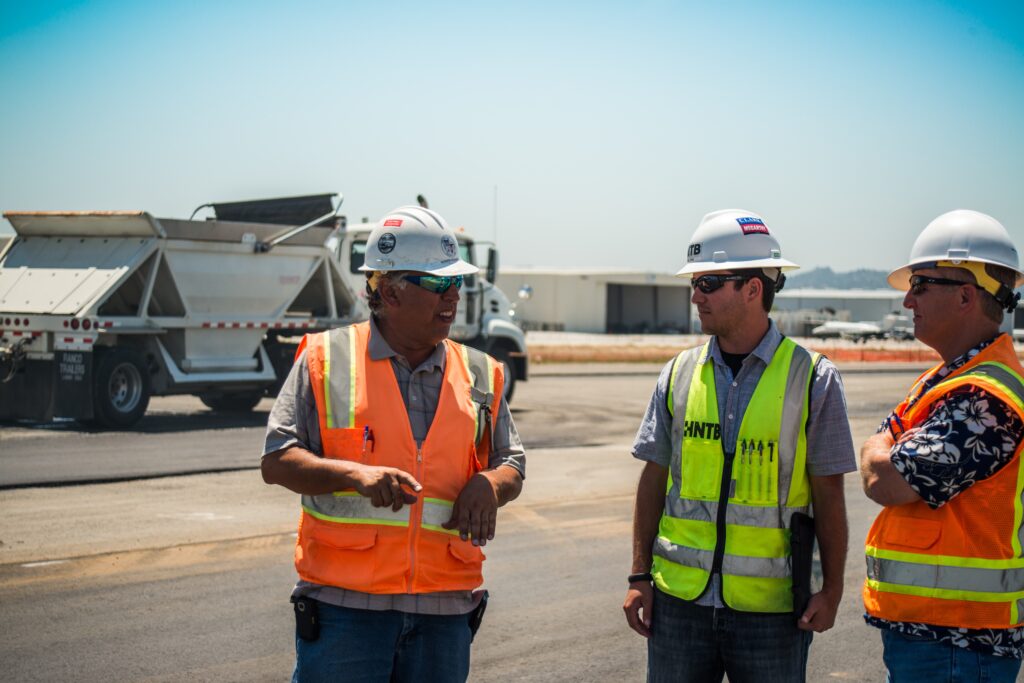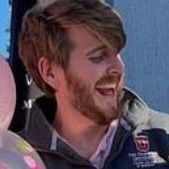Please provide a summary of your job or research. What is an average day like? What are some duties performed?
I am currently a civil engineer focusing on the key buildings and systems of an airport, or aviation infrastructure projects. I design important projects at airports, including runways, taxiways, terminals, hangars and everything in between. My job typically involves developing construction drawings, specifications, and reports which provide clear direction for contractors to build our projects in the field. I also get the opportunity to witness construction in the field, my favorite part of the job. To deliver a complete design, I use math extensively in the development of airfield layouts (geometry), drainage plans (fluid dynamics), and pavement sections (mechanics of materials). To aid in our calculations, we use several tools including Excel, MATLAB, and custom-built tools like FAARFIELD (FAA Pavement Design) and AviPlan (Aircraft movement simulator). In addition to calculations, we develop our plans using a computer aided design (CAD) platform known as Civil3d. On any given day, I am often working on multiple projects in different stages of planning, design and construction. There is a never a dull moment as a civil engineer at an airport.

What is your educational background and what prompted you to go this direction (why are you where you are instead of a completely different career somewhere else?).
BS in Civil and Environmental Engineering from the University of California, Berkeley
MBA from UCLA Anderson
I have always been interested in aviation and construction since I was a young boy. I practically grew up in a Lego box and was often found in the backyard digging holes or building something. Civil Engineering seemed like a logical career path and I selected that major coming into my undergraduate degree. While at Berkeley, I also started to pursue my pilot’s license. In my junior year, I was introduced to airport design and quickly set out finding an opportunity to work in this industry. I joined my current firm HNTB as an intern and have been working here happily ever since.
What have you struggled with or overcome in your educational or life path to your current job?
As an engineer, it’s ironic that math has been somewhat of a struggle for me throughout my life. In grade school, I remember the horror of trying to fill in multiplication tables as part of timed quizzes. I recall in high-school struggling on the math portion of the SAT and being afraid I wouldn’t get into a good school as a result. At UC Berkeley, I nearly switched to a non-engineering major due to my poor performance in calculus. Throughout my education, I’ve had to spend a lot more effort on math than some of my peers and my struggles with math nearly diverted me from engineering on several occasions. However my passion for engineering drove me to persevere and ultimately provided a tangible application that completely changed my relationship with math. In my junior year at Berkeley, I started to take coursework which applied math to real world concepts like structures, materials and fluids. This finally provided a tie between theory and real world applications that allowed me to better understand math. Especially as I was exposed to the myriad of technical tools we use as engineers on a daily basis, I now look forward to math heavy, quantitative analysis. By finding real world applications for math, I was able to take it from a weakness to an area of strength.

What is the best part of your job/research?
Watching our designs come to life is immensely rewarding. It is very exciting to see your design move from paper to real life and ultimately see aircraft and passengers start to use it. I have even had the pleasure of landing on a runway I designed and boarding a plane at a terminal I planned.
What is the worst part?
Many of our projects rely on a budget, so even if we find a great solution to one of our client’s problems, they may not be able to move forward with our plan if they cannot secure funding. Thankfully a lot of our projects are funded by the Federal Aviation Adminsitration (FAA), so they already have funding in place. We just need to design within the budget.
What’s the most exciting part of your job?
Working on the airfield. No question about it. Been doing this for over a decade now and I still get excited when I’m out on the airfield and a plane takes off near me. The power of these aircraft is incredible; you can feel the engines fire-up and the roar as they roll down the runway.
What’s the most exciting work/research related thing that has happened to you?
We worked on a critical runway project at Van Nuys Airport north of LA. It is the world’s busiest private jet airport and we were reconstructing the primary runway. It was a very difficult project to construct in a short time window but ultimately, we delivered it on-time and on-budget. To celebrate, we did a ribbon cutting on the runway, but it was no typical ribbon cutting. Myself and three others held up two 25’ poles and a stunt plane flew between them to cut the ribbon with its wings. See photo below.

What has changed about your profession in the past ten years?
Our industry has moved completely to 3d modeling of our designs. Ten years ago, we relied heavily on 2d modeling techniques using simple lines in CAD. Now our CAD models include 3d pipes and surfaces and can analyze a complex design on the fly. The advancements in CAD technology in the last decade have greatly improved productivity and the accuracy of our plans.
What do you think will change in the next ten?
Technology will continue to advance and some of the designs tasks we now do manually will be automated through machine learner or artificial intelligence (AI). We will always need engineers to make the necessary judgment calls and audit the outputs from CAD, but I believe in the next decade, we will see computers develop entire plan sets with little effort.








